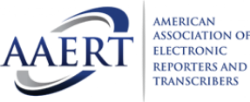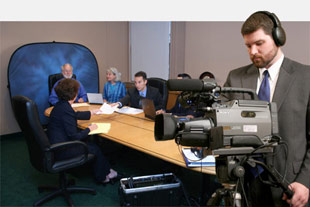Legal Videography: Why It’s a Vital for Complex Legal Cases
Why Legal Videography Is Important for Accurate Court Recordings
The function of legal videography in courtroom settings can not be overemphasized, as it works as a crucial device for maintaining the integrity of court records. By capturing both spoken and non-verbal interaction, it boosts the clearness of witness statements and shows the nuances of courtroom interactions. This thorough documents not only aids in reducing possible misunderstandings but additionally supports appellate reviews, therefore strengthening the judicial process. Nonetheless, the ramifications of incorporating lawful videography into standard court room methods raise vital concerns about its more comprehensive influence on the lawful system. What might these ramifications entail?
Value of Visual Proof
In the realm of legal procedures, the relevance of aesthetic proof can not be overstated. Visual evidence works as an effective device in establishing realities, proving statements, and boosting the total clarity of a case. This type of evidence, that includes photos, video clips, and layouts, can give a tangible context that verbal descriptions frequently lack, consequently using courts and courts a more clear understanding of the situations surrounding a situation.
Additionally, visual evidence aids in the retention of information. Human cognition is inherently visual, and people are more most likely to bear in mind and understand details offered in an aesthetic style. In the court, this can be important, as engaging aesthetic evidence can sway opinions and reinforce the story offered by lawful agents.
Furthermore, the use of visual evidence can minimize misunderstandings and obscurities that often emerge from spoken exchanges. By supplying a straight depiction of occasions, visual evidence aids to get rid of subjective interpretations and fosters a more objective exam of the realities. Subsequently, the combination of visual evidence right into legal proceedings not only reinforces the stability of the judicial process but also enhances the likelihood of attaining a simply result.
Recording Non-Verbal Signs
Using advanced videography techniques can dramatically boost the capture of non-verbal hints during lawful procedures. Non-verbal communication, consisting of faces, body movement, and eye get in touch with, plays an essential role in communicating emotions and purposes that may not be explicitly mentioned in verbal testament. legal videography. Legal videography employs high-definition cameras and calculated angles to guarantee that these refined cues are taped with quality and precision
The capability to assess non-verbal behavior can supply valuable context to statements made throughout court sessions. For instance, a witness's reluctance or self-confidence can be analyzed through their pose or motions, potentially influencing the court's assumption of trustworthiness. Additionally, making use of close-up shots can aid concentrate on a speaker's expressions, enabling a more nuanced understanding of the statement.
In addition, incorporating numerous electronic camera angles can create an extensive view of interactions, highlighting dynamics between parties involved. This multifaceted method not only enhances the accuracy of the court record but also aids in preserving the integrity of the judicial procedure - legal navigate here videography. Ultimately, recording non-verbal signs via lawful videography cultivates a richer, extra complete depiction of court room process

Enhancing Testimony Integrity
The dependability of testimony can be dramatically strengthened with making use of top notch legal videography. Video clip recordings serve as an unbiased medium that captures not just the spoken words of witnesses but also the nuances of their delivery, consisting of tone, pacing, and emotional expressiveness. This multifaceted documents offers a clearer understanding of the witness's credibility and intents, which can be pivotal in legal process.
Furthermore, lawful videography reduces the possibility for misinterpretations that might emerge from written records alone. When jurors can observe a witness's disposition and body movement together with their testimony, they are much better outfitted to evaluate the credibility and reliability of the evidence provided. This aesthetic context can reinforce the testimonial story, making it more compelling and credible.
Furthermore, the visibility of a video clip recording can deter prospective variances in testament. Witnesses might be more careful in my explanation their declarations when they recognize they are being recorded, causing even more exact and truthful accounts. In general, high-quality legal videography boosts the honesty of testimony, ensuring that the court has access to a complete and sincere depiction of the truths as communicated by the witnesses.
Sustaining Appeals and Reviews
Lawful videography plays a critical role in supporting appeals and evaluations by providing a comprehensive visual record of courtroom procedures. This aesthetic paperwork captures not only the talked words of witnesses and attorneys however also the nuances of body language, intonation, and courtroom dynamics. Such components can be pivotal in recognizing the context of testaments and debates provided.
In the appellate process, where the focus is on errors of regulation and step-by-step justness, a video record can offer as an essential device for appellate courts. It allows judges to review the original trial context, guaranteeing that decisions are based upon a full understanding of the process. The capability to visually analyze the temperament of witnesses or the communications between events can expose understandings that composed transcripts might neglect.

In addition, legal videography can assist in go to these guys clearing up obscurities in statements or step-by-step rulings, thereby enhancing the basis for an appeal. By using a reputable, objective account of what transpired in court, lawful videography not only sustains the integrity of the lawful process yet likewise empowers all celebrations involved to make enlightened decisions concerning their cases.
Improving Court Room Processes
Enhancing court performance, legal videography enhances processes by supplying prompt access to aesthetic records of process. This innovation permits judges, attorneys, and courts to review crucial testimony and proof, guaranteeing that all parties have a clear understanding of the situation. By recording the nuances of verbal and non-verbal interaction, videography enriches the document, making it less complicated to understand the context and weight of testaments.

Furthermore, video clip recordings can assist in remote engagement in hearings, permitting for better adaptability in scheduling and involvement, which is particularly important in complex cases including several stakeholders.
Final Thought
In final thought, legal videography plays a vital duty in ensuring accurate court recordings by providing vital aesthetic evidence that captures both spoken and non-verbal interaction. This technique boosts the integrity of testaments, supports appellate reviews, and simplifies court room processes. By cultivating a detailed understanding of courtroom characteristics, legal videography inevitably contributes to extra fair judicial results, reinforcing the honesty of the lawful system and helping with informed decision-making.